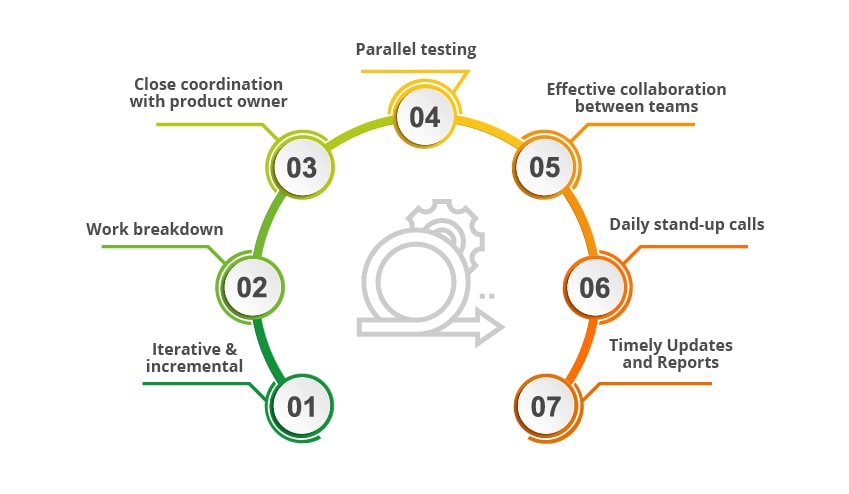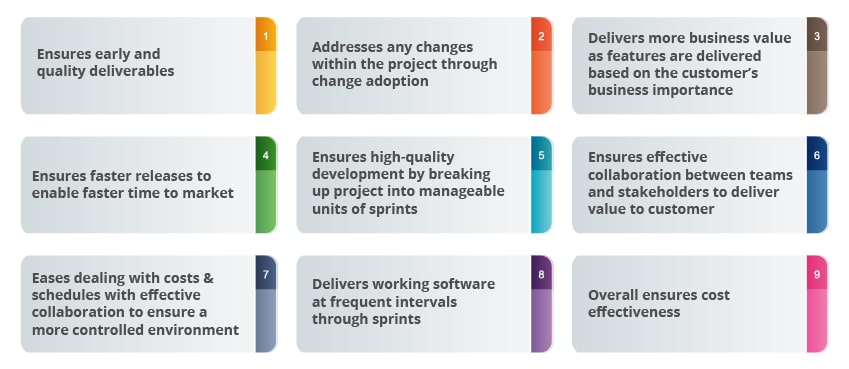Agile methodology is the most significant approach to project management which is effectively used in the process of software development. This agile approach has been majorly introduced in the field of software development to overcome difficulties with earlier waterfall model and to make processes more flexible and effective.
The agile development methodology has revolutionized information technology and according to an article by Harvard Business Review, which states that, “Over the past 25 to 30 years they have greatly increased success rates in software development, improved quality and speed to market, and boosted the motivation and productivity of IT teams. Now, Agile methodologies involve new values, principles, practices and benefits that continue to spread across a broad range of industries and functions and even to the C-Suite.”
Specifically, the agile methodology definition refers to the software development process centered around the idea of iterative development. In this agile development methodology, requirements and solutions evolve through proper collaboration between cross-functional teams and the product owner. This unique software development process ensures teams to deliver value faster with quality and predictability and handles changes effectively.
Agile Development Methodology Features

Iterative & incremental:
The agile method proposes incremental and iterative approach with frequent reassessments to make the product better.
Work breakdown:
The agile process consists of small cycles technically known as sprints or scrum. It involves breaking down the project work into iterations or sprints
Close coordination with product owner:
The product owner or customer has a first-hand overview of every stage of project development along with changes if any.
Parallel testing:
The software development and the software testing are taken up in parallel to ensure quality software is delivered. Regression testing is involved every time whenever new functions or logic is added
Effective collaboration between teams:
Testers and developers work in close collaboration when compared to the earlier waterfall model
Daily stand-up calls:
Every day scheduling of short and quick meetings as stand up calls is taken up to review the tasks status within the agile process
Timely Updates and Reports:
The agile process places upfront the product owner to be updated with daily, and weekly reports on project status which makes the process transparent
Benefits of Agile Methodology

– Ensures early and quality deliverables
– Addresses any changes within the project through change adoption
– Delivers more business value as features are delivered based on the customer’s business importance
– Ensures faster releases to enable faster time to market
– Ensures high-quality development by breaking up project into manageable units of sprints
– Ensures effective collaboration between teams and stakeholders to deliver value to customer
– Eases dealing with costs & schedules with effective collaboration to ensure a more controlled environment
– Delivers working software at frequent intervals through sprints
– Overall ensures cost effectiveness
Today, agile methodology is more beneficial to every project development process as it ensures effective communication between teams, and ensures quality outcomes. This process of agile approach enhances the innovation as multidisciplinary teams collaborate and ensure business value with the product owner involvement throughout the delivery process.
This agile approach ensures enhanced communication with close collaboration, and brings about organizational adoption to changes to deliver value to the business owner. Various agile methodologies can be leveraged by businesses based on the project size and based on the project need.





